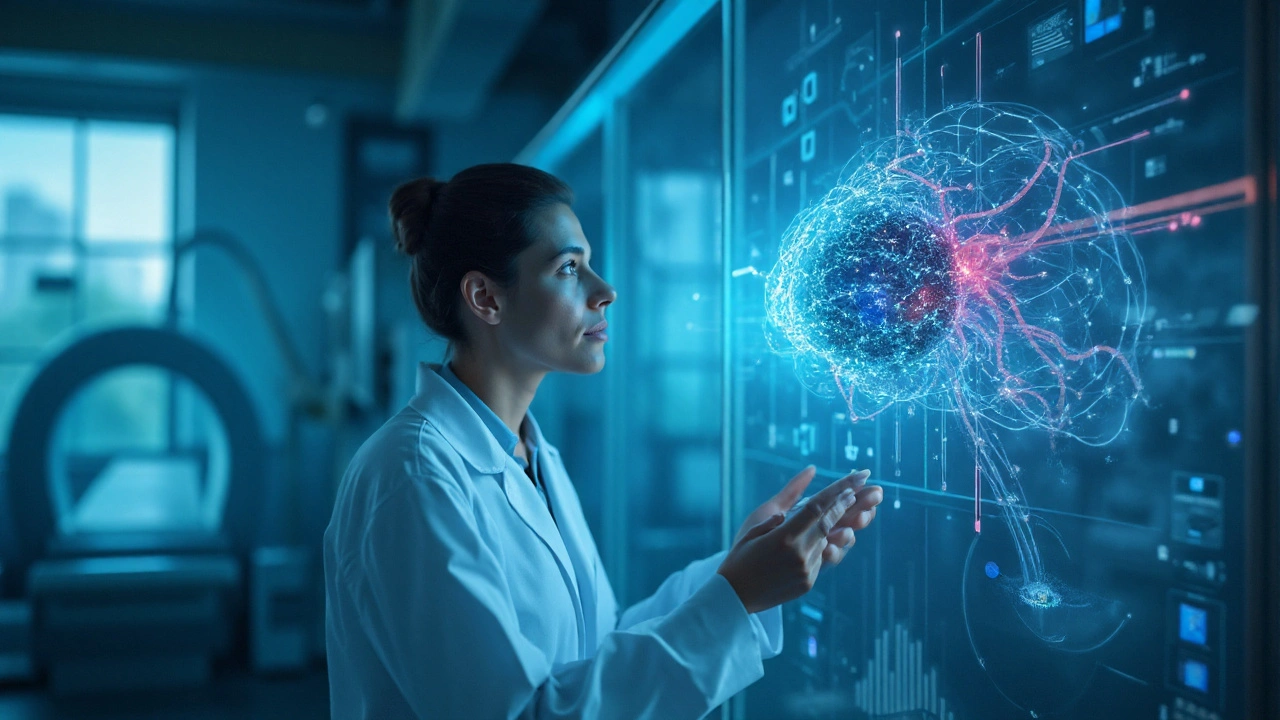Future OCD Research & Treatment: Emerging Therapies & Technologies
Explore cutting‑edge research, new neuromodulation tools and digital therapies shaping the next generation of OCD treatment.
Continue ReadingIf you’ve tried meds and therapy and OCD still feels like a constant battle, you’ve probably heard about deep brain stimulation, or DBS. It’s a surgical option that aims to calm the brain circuits that drive obsessive thoughts and compulsive actions. In plain terms, doctors place tiny electrodes in specific brain areas and send gentle electrical pulses to smooth out the over‑active signals.
DBS isn’t a first‑line treatment. Most doctors will only suggest it after multiple medication trials and cognitive‑behavioral therapy haven’t helped. The good news is that many patients see a noticeable drop in symptoms within weeks or months, and the effect can last as long as the device stays on.
The procedure targets the ventral capsule/ventral striatum or the subthalamic nucleus. These spots act like a switchboard for anxiety and reward pathways. When the electrodes fire, they disrupt the brain’s “alarm system” that fuels intrusive thoughts. The device is implanted under the skin near the collarbone, and a thin wire runs up to the brain. After surgery, a programmer adjusts the pulse strength, frequency, and timing until the patient feels a reduction in obsessions.
Adjustments are usually done in the clinic, and the settings can be tweaked for years. Because the stimulation is adjustable, doctors can find the sweet spot that gives relief without causing side effects like mood changes or memory issues.
Like any brain surgery, DBS carries risks. Infection, bleeding, or a misplaced electrode can happen, though they’re rare with experienced teams. Some patients report temporary mood swings or feeling “zoned out” when the settings are too high. Most side effects improve after the programmer fine‑tunes the device.
Recovery is relatively quick. You’ll stay in the hospital for a day or two, then avoid heavy lifting for a few weeks. During the first month, you’ll have several follow‑up visits to check the hardware and adjust the stimulation.
Success rates vary, but studies show that about 50‑60% of people with severe, treatment‑resistant OCD experience a 35% or greater drop in symptom severity. Those who respond often describe being able to work, socialize, and enjoy daily life without the constant mental chatter.
Before deciding on DBS, it helps to talk with a neurologist, psychiatrist, and a neurosurgeon who specialize in OCD. Ask about the surgical team’s experience, the monitoring plan, and what life will look like with a battery‑powered device under your skin.
Bottom line: deep brain stimulation is a powerful option for people whose OCD won’t chill out with pills or therapy. It’s not without risks, but for many, the chance of a calmer mind makes it worth looking into.

Explore cutting‑edge research, new neuromodulation tools and digital therapies shaping the next generation of OCD treatment.
Continue Reading